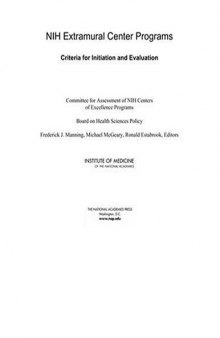 جزییات کتاب
جزییات کتاب
Grants for research centers located in universities, medical centers, and other nonprofit research institutions account for about 9 percent of the National Institutes of Health budget. Centers are popular because they can bring visibility, focus, and increased resources to bear on specific diseases. However, congressional debate in 2001 over proposed legislation directing NIH to set up centers for muscular dystrophy research highlighted several areas of uncertainty about how to decide when centers are an appropriate research mechanism in specific cases. The debate also highlighted a growing trend among patient advocacy groups to regard centers as a key element of every disease research program, regardless of how much is known about the disease in question, the availability of experienced researchers, and other factors. This book examines the criteria and procedures used in deciding whether to establish new specialized research centers. It discusses the future role of centers in light of the growing trend of large-scale research in biomedicine, and it offers recommendations for improving the classification and tracking of center programs, clarifying and improving the decision process and criteria for initiating center programs, resolving the occasional disagreements over the appropriateness of centers, and evaluating the performance of center programs more regularly and systematically.



 دانلود کتاب
دانلود کتاب

 جزییات کتاب
جزییات کتاب





 این کتاب رو مطالعه کردید؟ نظر شما چیست؟
این کتاب رو مطالعه کردید؟ نظر شما چیست؟
